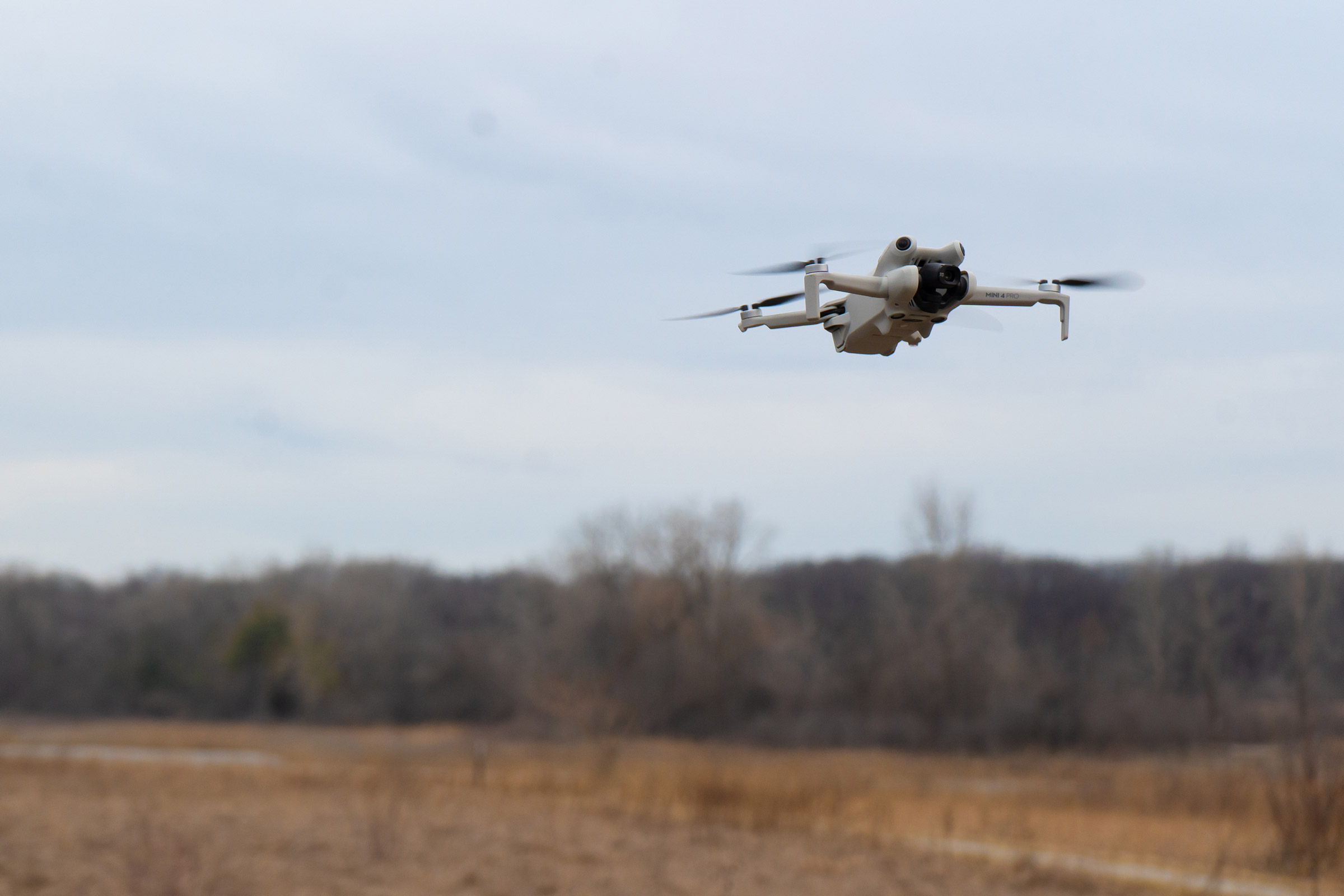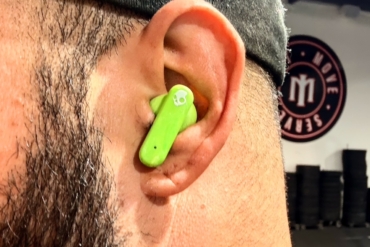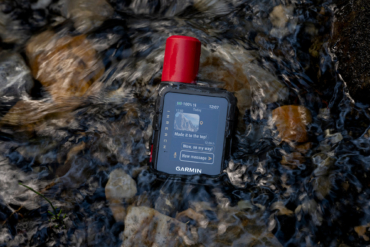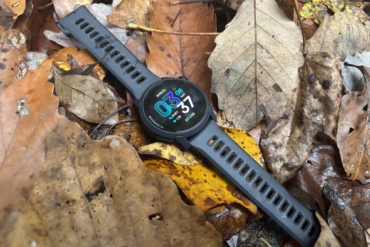Outdoor lovers often balk at bringing ever more technology into the outdoors — but as I learned when field-testing a new drone, an eye in the sky can add fun and improve access to outdoor spaces. But it’s imperative to do so respectfully by following drone laws and regulations.
So, when bringing drones into the great outdoors, there are two crucial questions: Why and how? The first is easy. Not only are drones a blast to operate, but they can also prove exceedingly helpful in times of need.
Five minutes into testing DJI’s Mini 4 Pro, I discovered what was snagging my lures at my winter fishing hole and spotted several trees that needed clearing from the creek and trails. And just a few weeks later, I used the drone to find some nearby good samaritans who could help my buddy unstick his Jeep from a muddy mess in the middle of the Shawnee National Forest.
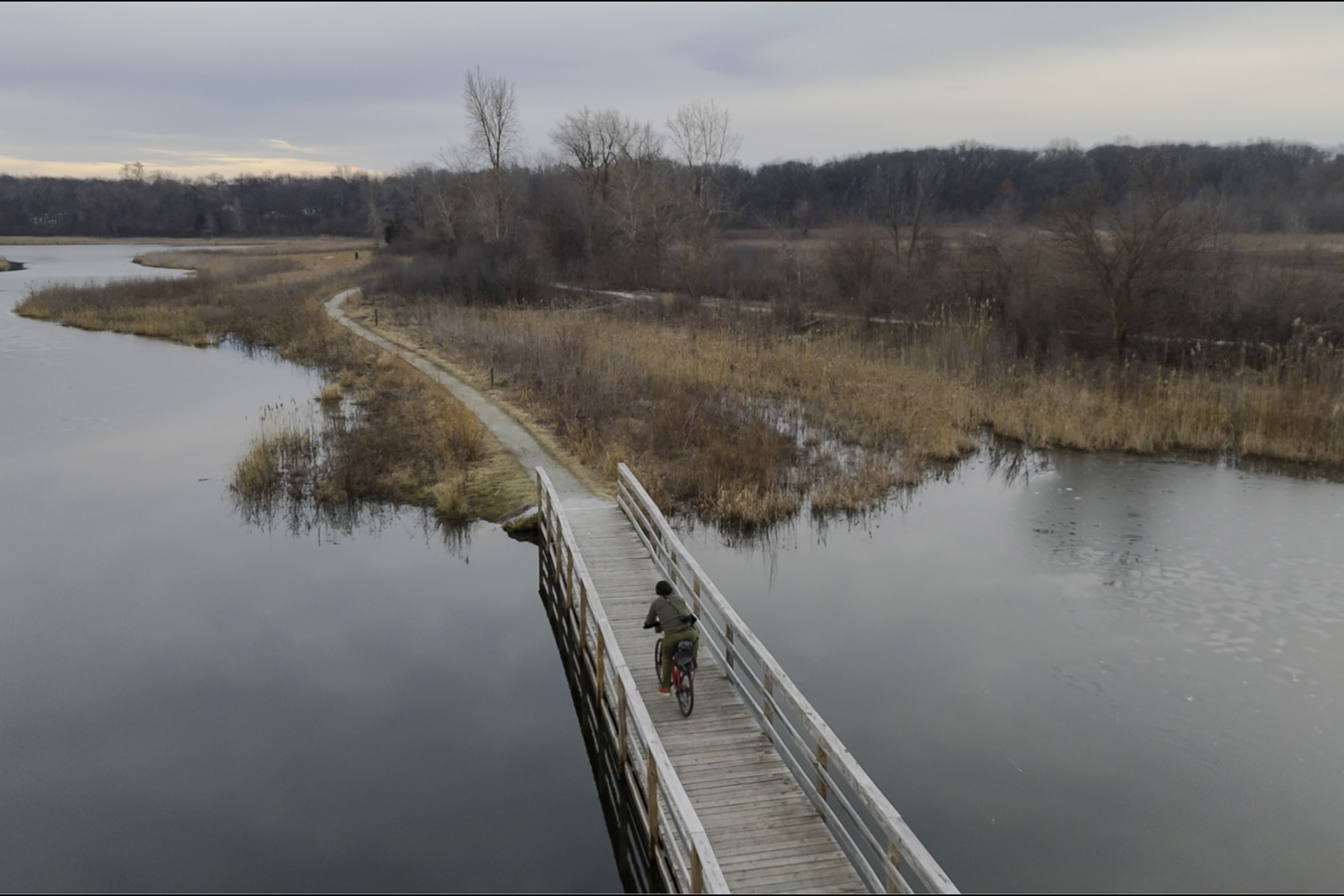
That covers “why?” — but “how?” is a bit more complex. Drone laws in the great outdoors and the best practices for responsibly using them can seem intimidating and confusing. So, with drones growing ever more practical, popular, and capable, I sat down with some of the foremost experts on the rules surrounding drones.
Drone Laws for the Great Outdoors
Hobbyist vs. Commercial Flyers
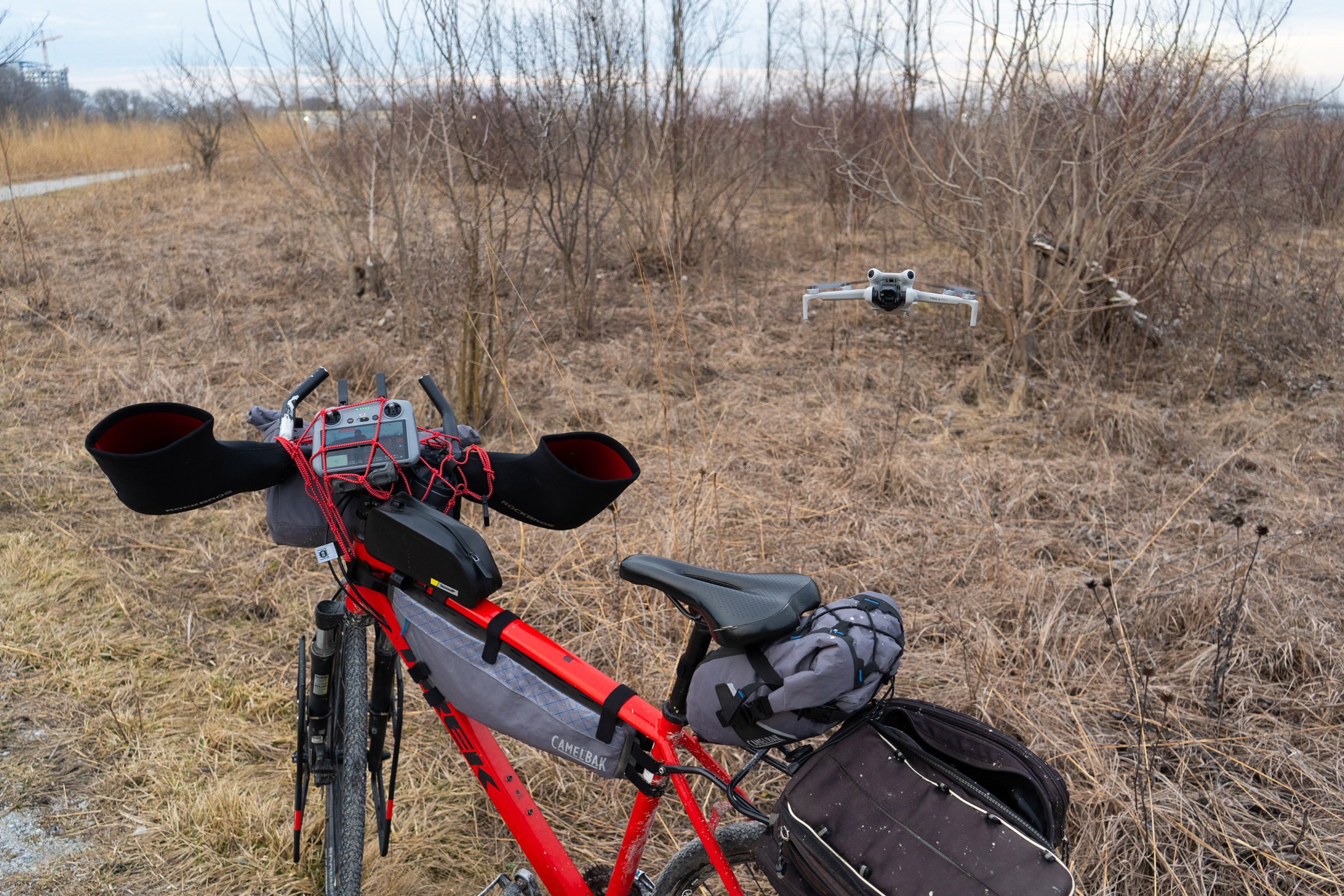
“The regulatory landscape can be a little bit confusing,” says DJI Senior Product Specialist and Chief Pilot Donovan Davis. “But basically, there’s two broad categories: the commercial space and the hobbyist space.”
Which basket you fall into makes the most significant difference to the rules you have to follow. If you’re interested in flying simply for fun and capturing videos of your adventures for social media, you’re a hobbyist. Before you set your sights on the sky, you must pass a federally mandated exam, the TRUST test.
Fortunately, the exam takes 10-30 minutes, is entirely free, requires no studying, and is available through numerous ventures online. Once you’ve passed it, there are only a few hard and fast hobbyist-specific rules.
There is no flying over 400 feet above ground level and no piloting from a moving vehicle. And, one rule that is less talked about: no flying directly over people, whether it’s by a few millimeters or a few meters.
“A lot of people don’t realize that there is a test out there, even if you’re just flying for fun — that you still have to take,” said Dom Davis, an associate attorney with SW&L Attorneys and an expert on drone law. He recommends keeping a copy of your TRUST test with you when you’re out flying, as many websites that administer the test don’t keep records.
For-Profit Flying?
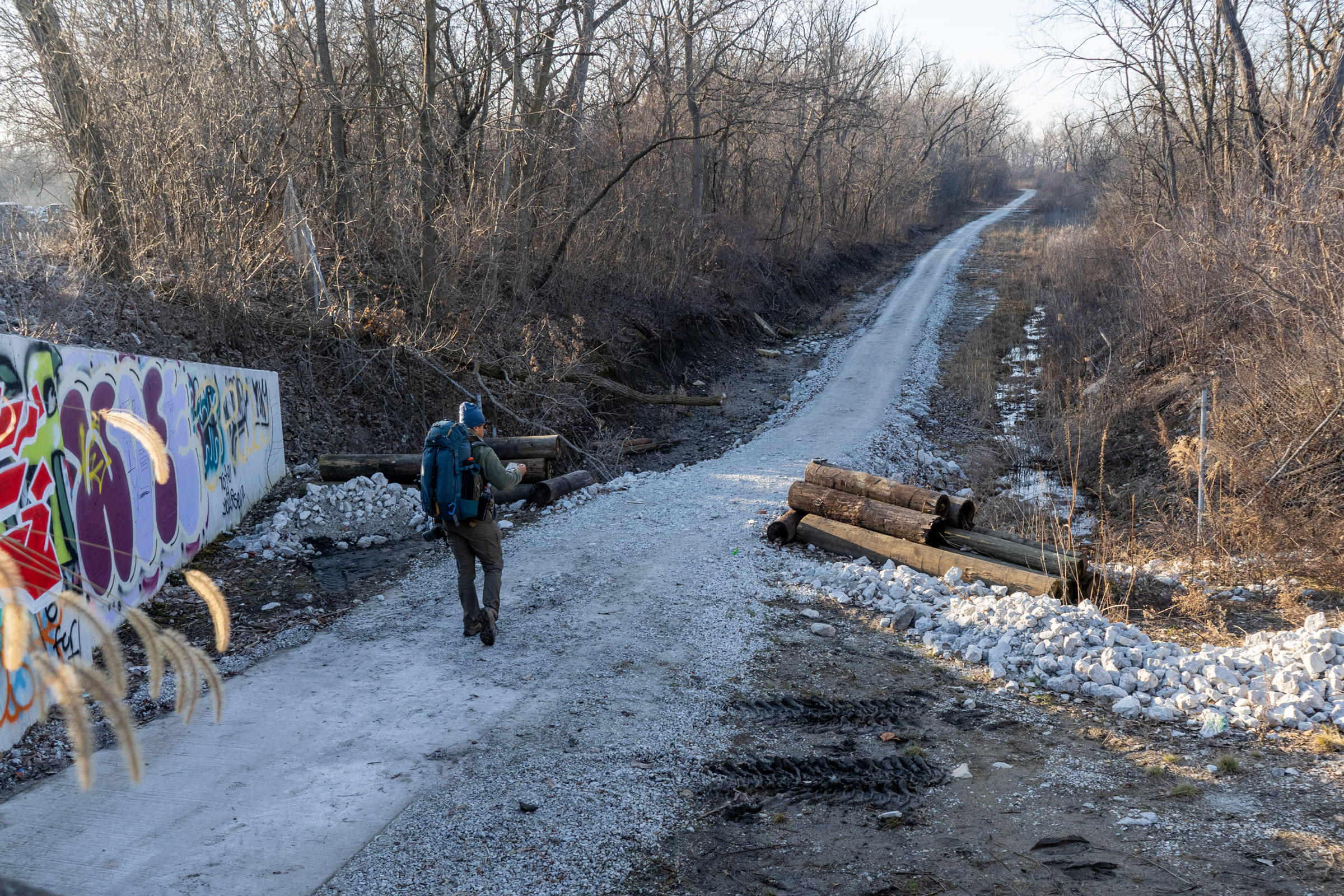
But, what makes one pilot a hobbyist and another commercial? According to the FAA, “flights for any compensation, monetary or otherwise, and flights related to or in furtherance of a business” are commercial under a rule called Part 107.
I threw several hypotheticals at the Davises, Dom and Donovan. What if you use a drone’s tracking feature to get some footage of yourself as an action sports athlete? Can you record your backpacking trip for a YouTube channel that has any monetization? How about flying a new drone as background research for a GearJunkie article? Two opinions came to the same verdict: Err on the side of safety — take the commercial test.
A few days of study, $175, and one 2-hour test later, I knew much more about sectional charts, airport operations, plane loading procedures, and radio communications practices. I also had another tax write-off and was now a professional pilot, if only in name.
So, what’s the difference ruleset-wise? Under Part 107, you can, in specific circumstances, fly directly over people and cars. In sparsely populated areas, you can pilot from a moving vehicle or boat to get a nice cinematic shot of your car venturing down rugged fire access roads or of you sending down light rapids in a canoe.
While hobbyists don’t have to register drones under 250 g, like the Mini 4, commercial fliers do. And for every “do not” for Part 107 fliers, there are waivers you could apply for and potentially get for a workaround.
Hard Rules: Night, Weight, Height, and More
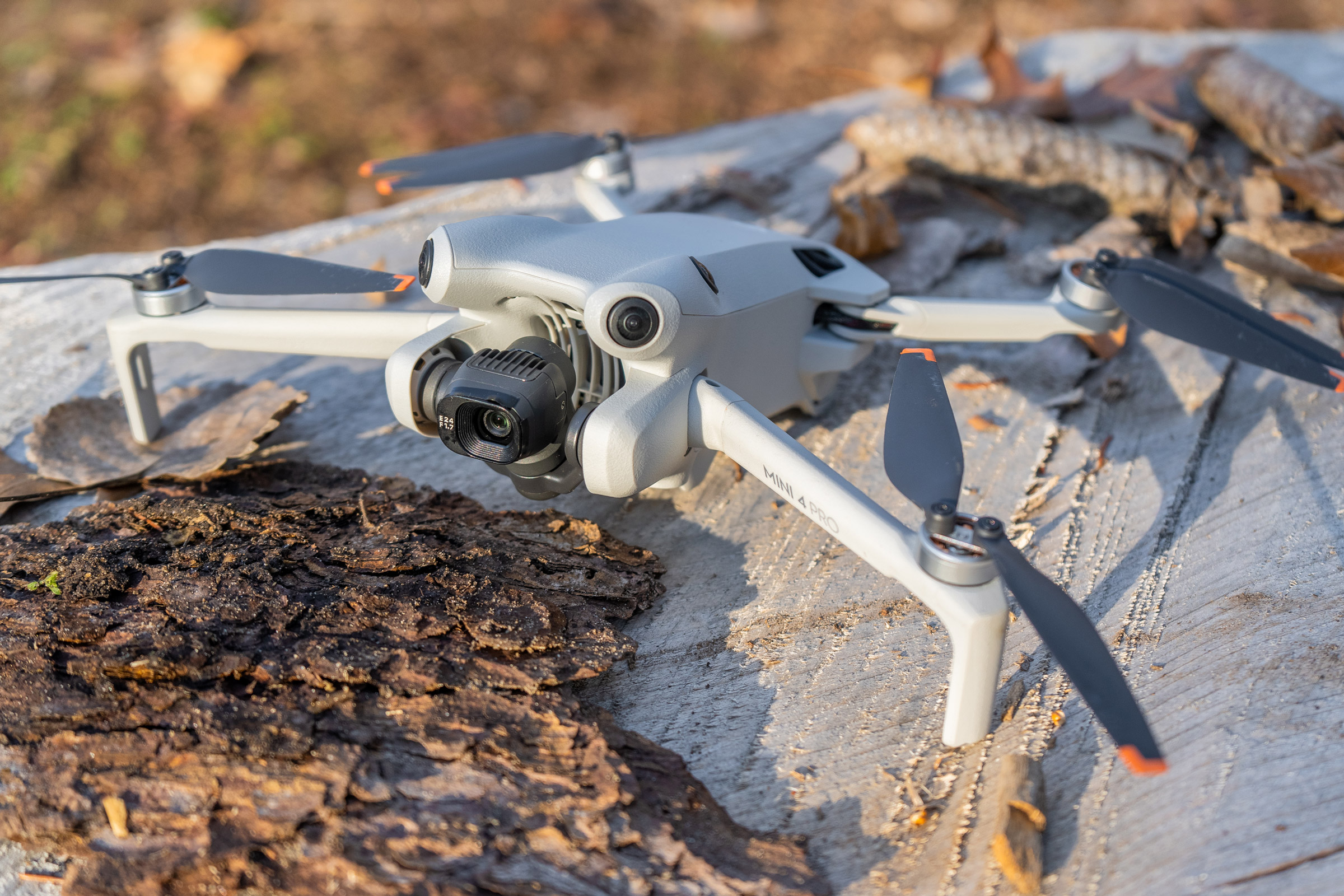
Most of the rules of flying are universal. Hobbyists or commercial drones can fly at night, provided they have anti-collision lighting. Every drone is required to have a remote ID, which has been a nonissue for models within the last few years. (Even old models from most drone companies will have a kit to retrofit them with a remote ID device.)
Drones above 250 g need to be registered either way. Notably, Dom said, “When you’re registering that drone for a recreational purpose, you can only register it for that recreational purpose. You won’t be able to change it later on.” So, if you plan on using a drone for business later on, you’re better off biting the bullet and getting a commercial license now instead of later.
Flights are still capped at 400 feet above ground level — save for the oddly specific circumstance of commercial flights around structures (like surveying a radio tower) where you can fly up to 400 feet above the structure. Crossing high above a road is one thing, but flying along them, above traffic, is a no-go “for obvious reasons,” Donovan said.
You are also still limited to flying line of sight. More specifically, “with vision that is unaided by any device other than corrective lenses,” the pilot and/or a visual observer need to “be able to see the unmanned aircraft throughout the entire flight,” according to the FAA.
Dom pointed out my glasses and potato-level visual acuity: “You can’t be using binoculars and say, ‘Hey, it’s in my line of sight!” Essentially, you don’t have to watch the drone at all times. But if you can’t do so from wherever you are without your day-to-day vision, reel it in and reposition.”
Most importantly, if any aircraft are passing close by, “just get on the ground. Let them land. They’re obviously priority over your photos,” Donovan told me.
Where to Fly
The most important rule for taking a drone on your next adventure is understanding where you can and can’t fly. On a federal level, this is pretty clear: National Parks and Congressionally Designated Wilderness Areas “prohibit the launching, landing, or operation of unmanned aircraft.”
“Now, some savvy drone fliers have taken this to realize that ‘Well, I can take off outside the National Park, and fly into [it]” said Dom. “If you ever feel like it’s a loophole, my advice is don’t do it. If it feels a bit sketchy, that’s probably because it is.” Besides, he points out that most parks’ scenic views are far enough inland from the border that even if you could reach them with a drone, you wouldn’t be in the line of sight.

While national parks are no-fly zones outside special permits, national forests are broadly clear. You should avoid flying around trailheads and campgrounds to give people a berth, and park-specific ordinances might prevent drones. However, by and large, they’re all clear.
Bureau of Land Management lands are arguably the best choice, suggests Donovan. BLM lands, even National Monuments on BLM land, have few drone regulations. Furthermore, Donovan noted that if any park-specific regulations prevent drones, you’d be hard-pressed to miss the “No Drone Zone” signs.
If you’re unsure, Donovan said the simple answer is to call the local ranger station. In his experience, there’s often a ranger who will tell you, “Yeah, you can’t fly here, but that monument that you’re trying to photograph or that special site you’re trying to get — if you go here, there’s a great vantage point from over here that you can use legally.”
Lastly, across the board, the FAA mandates a 5-mile no-fly zone around all airports unless you’ve contacted the control tower or the airport (if the airport is uncontrolled).
Local Drone Flying
At the local level, things become an assortment of common sense and specific regulations. I already mentioned park-specific rules, but many municipalities have ordinances against drones. Donovan’s advice: If the information regarding drone use in an area is unclear, try calling the local non-emergency police number with questions.
One common misconception is that there aren’t any federal regulations about flying over private property. However, state drone laws can make things murky.
“You can run into all sorts of trespassing issues,” Dom said. “There’s also kinda been that uncertainty on the civil side: ‘Who owns how much land, and how much airspace above my land do I own?’”
Here, common sense has to take the reins.
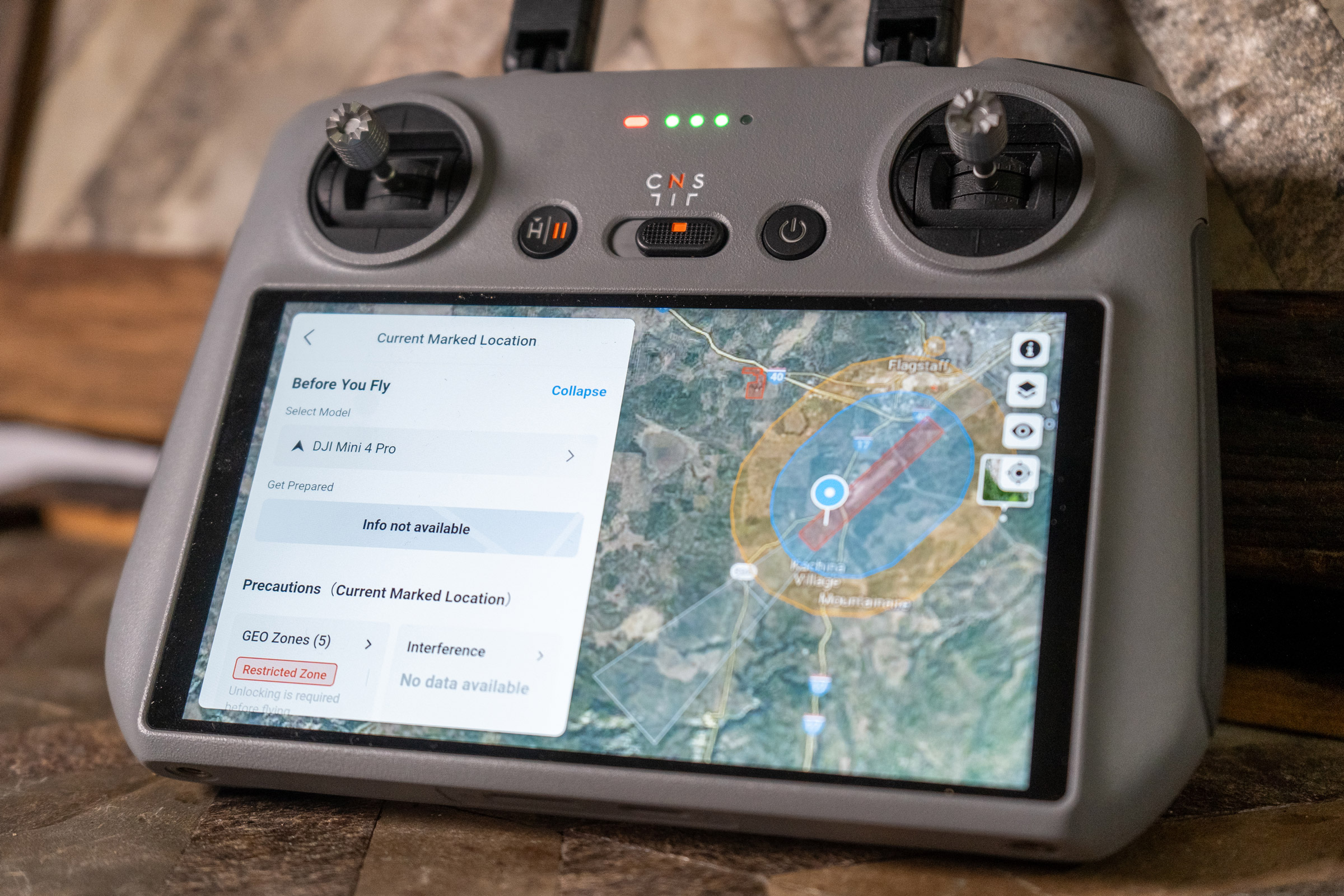
Say I want to get photos of Sedona’s vermillion cliffs or film a video of me canoeing down a navigable (and thus public) river bordered by private land. Dom advises that the best bet is to stick to what’s public.
However, there is a difference between briefly crossing high over private lands to get a bird’s-eye view of public landscapes and flying low and focusing on someone’s house. Uncertainty abounds, but asking permission and avoiding flying in a harassing or invasive way around someone’s land is an excellent place to start.
Some parks and tracts of BLM land butt up close to rural airports, landing strips, or hospitals with helipads. Even when they don’t, remote areas can often experience Temporary Flight Restrictions (TFRs) mandated by the FAA, such as during wildfires or search and rescue operations. For the safety of personnel, drones have to be grounded during these times.
Fortunately, in 2024, there is no shortage of apps to keep you abreast of where you can and can’t fly. Airspace Link, Autopilot, Avision, UASidekick, and Air Aware all partner with the FAA to show airspace restrictions.
The Fly app that controls DJI’s products reflects airspace restrictions and can even automatically fence off areas. None of these mapping products can be expected to show all the restrictions of local ordinances, and sometimes, there are some minor inconsistencies between them.
Still, these days, it’s easy to open your phone and know where the FAA says you can and can’t fly.
Sport-Specific Drone Laws: Hunting, Fishing, Biking, and Overlanding
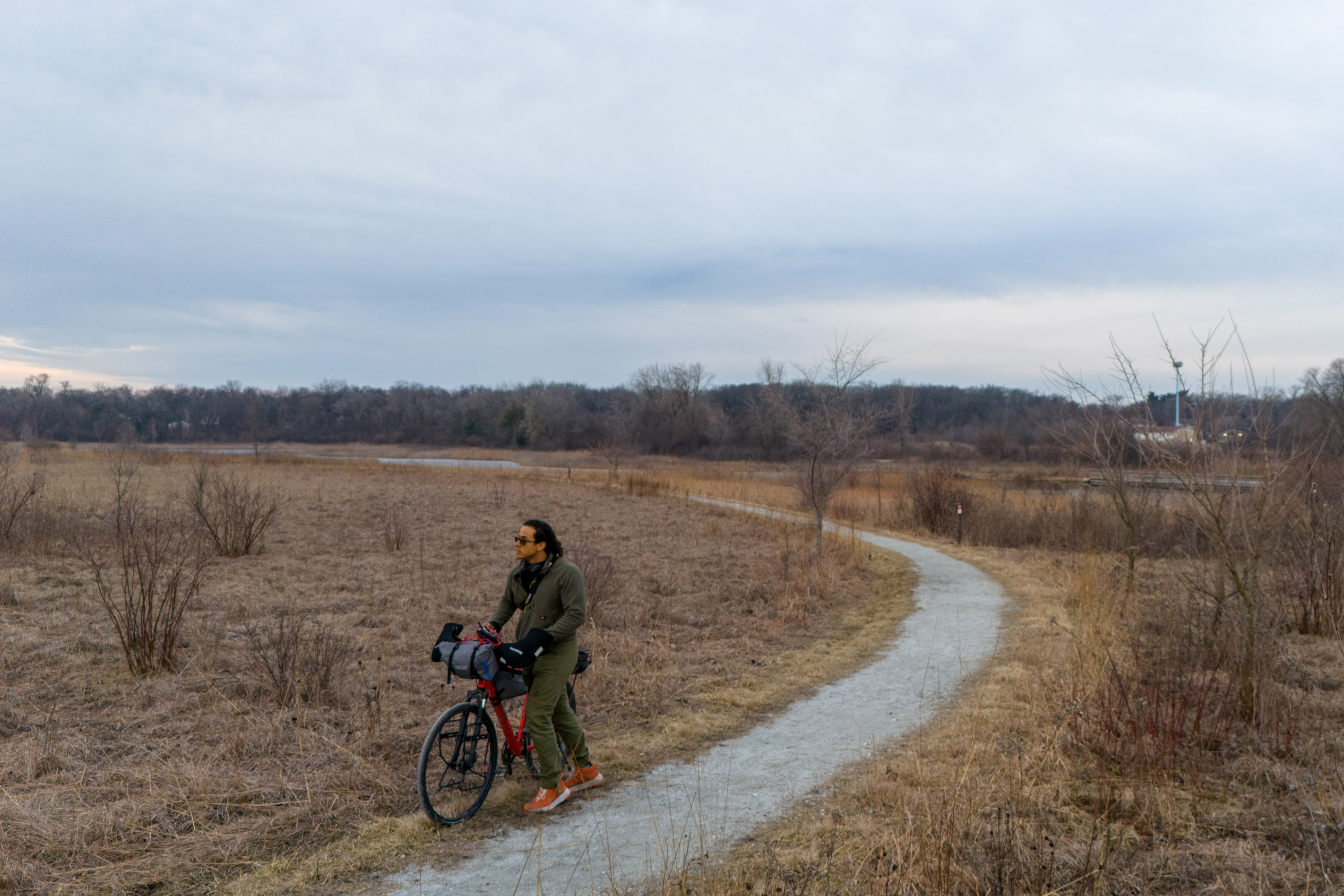
There is no shortage of ways a drone can add an extra element to the sports and activities through which people enjoy the outdoors. Playing around with my Mini 4, I was struck by how a drone that weighs around a bag of chips could allow me to scout trails and waterways after storms or wildfires. I could autonomously film shots of my bikepacking trip that would have been nearly impossible just a decade ago.
Sport-specific utilities abound, but so do a few relevant drone regulations and best practices.
For one thing, bikepackers should be in the clear to fly above roads, if they are in a legally sparsely populated area, according to Donovan. So, that tracking shot of you bombing down a mountain fire access road should be all clear.
Most states’ drone laws allow filming and scouting while fishing. Hunting is a different story. In Dom’s home state of North Dakota, it is illegal to use any kind of aircraft for spotting game 72 hours before and during hunting season. In most states, you’d be better off considering even scouting potential hunting land by drone a no-go.
Wildlife photography and filming are in the clear. However, many states have laws against harassing, driving, or disturbing the nesting activities of wildlife, except for the purpose of hunting. In other words, distance and caution are imperatives.
Small, portability-first drones have come a long way, but this means that serious wildlife photography is still the domain of larger and more capable drones like Autel’s EVO series or DJI’s Mavic 3.
Overlanders and other backcountry motorists who want to leverage modern drones’ autonomous follow-me modes would be best off springing for a commercial license so they can film from a moving vehicle.
Drone Regulations: Practical Points
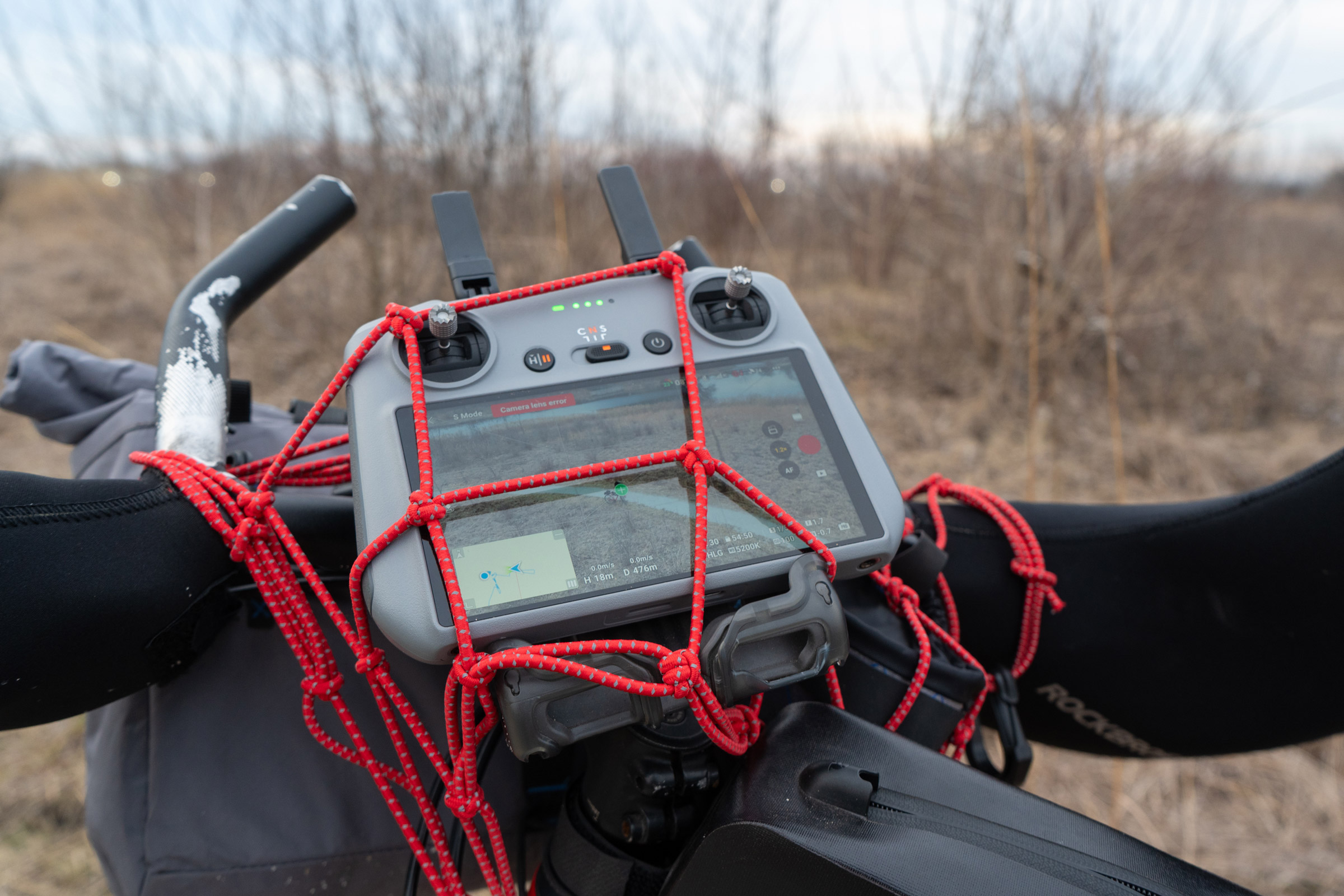
For all the confusing drone laws in the great outdoors, many of the best practices boil down to a little bit of common sense, planning, and prep.
Want to bring a drone on a backpacking trip? Great! Figure out whether you just need a TRUST test for recreational flying, or a Part 107 commercial license. Unsure about whether drones are allowed where you’re heading? Call the local ranger station just to make sure, and check your app before taking off, to make sure there aren’t any ongoing airspace restrictions.
According to Donovan, common courtesy will take you a long way. Don’t fly directly over people, and if anyone is approaching you on the trail, land and let them pass — ditto for any approaching aircraft. Stick to public land when possible, ask for permission when not, and avoid flying into other people’s business.
Then there are the on-the-ground realities that don’t change where you can fly, but how you go about doing so. Make sure your landing zone is clear. Keep plenty of juice in the battery for your return flight. Know what your drone is capable of.
For example, as much as I love the portability of my Mini 4, I need to know the wind speed at which it starts to struggle. I have to keep aware that, at its size, on a hazy day, my visual line of sight might reduce flights to 80 yards.
When landing, don’t rely on a drone’s object avoidance; it still struggles with small twigs, especially when suddenly buffeted by a hard gust while tracking me on a bike at 13 miles an hour. (For the record, the drone’s body is quite tough. The lens, on the other hand, now needs considerable therapy after all of a week around me.)
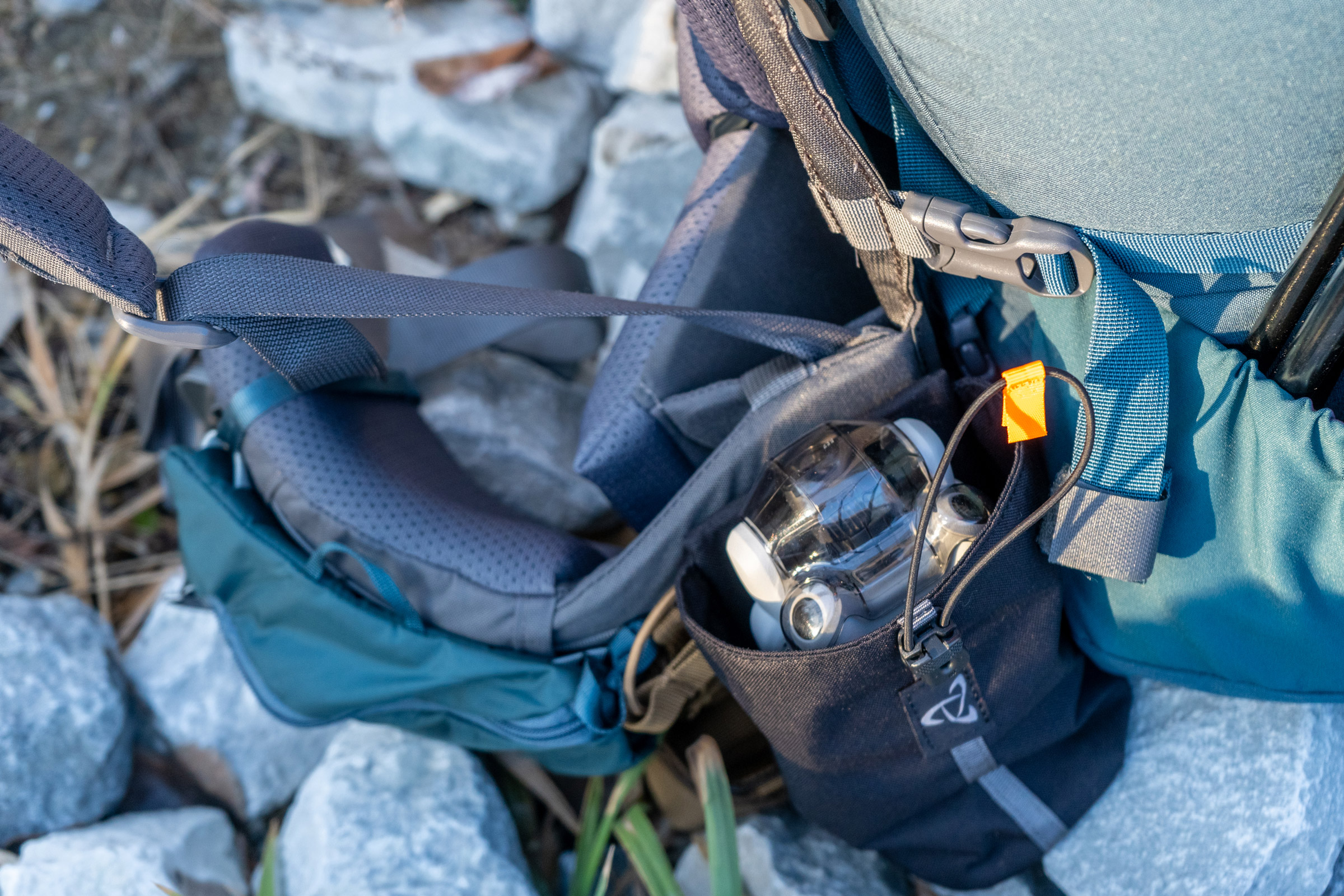
Those who plan on hitting long trails should also give some thought as to how they’re carrying their drone. I was pleased to find that my Mini 4 fit snugly into the breast pockets or hip belt water bottle pockets of my usual Bridger 65.
But even at its lightest, a drone is extra weight. An under-9-ounce drone quickly turned into 2-3 extra pounds in my pack by the time I got done adding the controller and extra batteries. If you’re one to count grams and drop hip belts, it might be worth asking how you’d carry your extra eye when it’s not in the sky.
Drone Laws and Regulations: The Big Takeaway
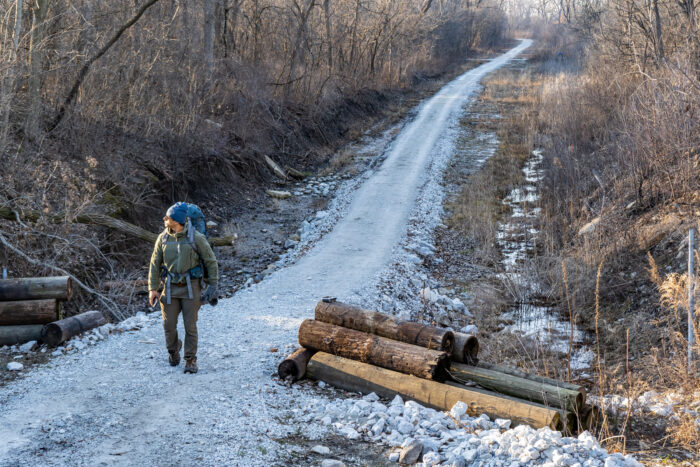
Drones exist in a superposition in the outdoor community. Who among us doesn’t love bird’s-eye view photos of someone hiking a trail we’ve never heard of, an angler fly casting a pristine trout stream, or various athletes sending it? Likewise, who among us hasn’t bemoaned tech in the outdoors?
Drones are here to stay, as are drone laws.
Whether or not they’re for you can come down to price, utility, and passion — but it shouldn’t come down to being intimidated by drone laws. As confusing as they seem, the rules of the highest road are relatively straightforward:
- Get the right license.
- Register your drone.
- Know where — and where not— to fly. Ask if you’re unsure.
- Plan ahead.
- Think about the common-sense logistics.
- Be courteous. Be responsible.
- And be vigilant (don’t crash your fledgling into water like I did).
Most of these points only require a little bit of initial responsibility, and those last few shouldn’t be too hard with an eye in the sky.
